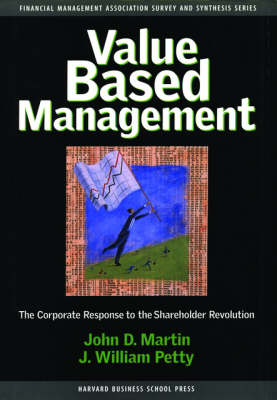Financial Management Association Survey and Synthesis
2 total works
Value Based Management with Corporate Social Responsibility
by John D. Martin, J. William Petty, and James S
Published 27 August 2009
As the first decade of the 21st century winds down we have seen a sea change in society's attitudes toward finance. The 1990s can best be described as the decade of shareholder supremacy, with each firm trying to outdo the other in their allegiance to shareholder value creation, or as it came to be known, Value Based Management (VBM). Nobody seemed to question this culture as the rising firm valuations translated into vast wealth creation for so many. Three significant economic events have defined the last decade and reshaped how the public feels about an unbridled devotion to VBM. (i) The dot.com bubble in 2000, (ii) the infamous accounting scandals of 2001, and (iii) the collapse of the credit markets in 2007-2008. In all three of these events the CEOs are portrayed as reckless and greedy. Wall Street has gone from an object of our admiration to an object of scorn. The first edition of this book, Value Based management: The Corporate Response to the Shareholder Revolution was written to help explain the underpinnings of value based management. At the time of its publication, few questioned whether the concept was the proper thing to do. Instead, the debate was focused on how to implement a VBM program. With this second edition of the book, the authors look at VBM after having seen it through good times and bad. It is not their intent to play the blame game or point fingers. Nor is it their intent to provide an impassioned defense of VBM. Instead they provide an academic appraisal of VBM, where is has been, where it is now, and where they see it going.
Why do some firms create extraordinary value for shareholders, while others destroy it? A powerful suite of value based management tools can make the difference. Value based management (VBM) refers to tools that financial managers can use to plan, monitor, and control a firm's operations in ways that enhance shareholder value. This timely book-based on the authors' research and on an extensive study of firms that have successfully implemented VBM systems-provides the first objective, field-tested synthesis of the most popular models in use today: the free cash flow method, the economic value added/market value added (EVA/MVA) method, and the cash flow return on investment approach (CFROI). Pointing to lessons learned by VBM adopters in a wide variety of industries, the authors outline the advantages and disadvantages of each model, and guide managers in electing, implementing, and operating one that best fits their organization. At its essence, value based management involves transforming behavior in a way that encourages employees to think and act like owners.
Laying the foundation for building a capital market-focused measurement and reward system that ties employee-level performance to owner-level rewards, this book will help today's leaders establish a continuous cycle of value creation that benefits all stakeholders of a company.
Laying the foundation for building a capital market-focused measurement and reward system that ties employee-level performance to owner-level rewards, this book will help today's leaders establish a continuous cycle of value creation that benefits all stakeholders of a company.

